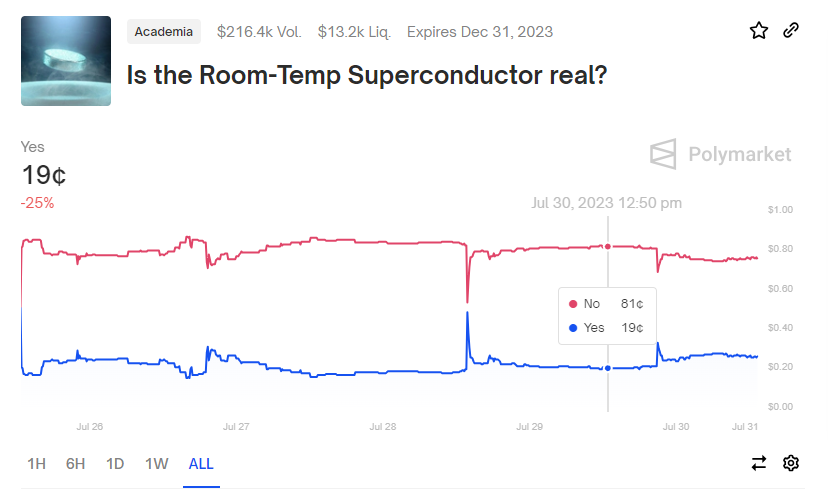🤖 Aye, robot!
Dont let excitment about AI advances distract from the emerging robotics revolution
Quote of the Issue
“Fears of robotics and technology respond, I think, to two human frailties. One is cognitive: we do not know what the future technological change will be and thus cannot tell what our future needs will be. The second is psychological: our desire to get a thrill from the fear of the unknown, from that scary and yet alluring prospect of metallic robots replacing workers in factory halls. It responds to the same need that makes us go and watch scary movies. When we do not go to a movie theater we like to scare ourselves with the exhaustion of natural resources, limits to growth and replacement of people by robots. It may be a fun thing to do but history teaches us that this is not something we should rationally fear.” - Branko Milanovic
Room Temperature Superconductor Update:
The Essay
🤖 Aye, robot!
Whether they want to make Latin America great or make America and Europe great again, populists across the world offer a similar brand of economics. Specifically, populist economics tends to ignore the notion of economic policy constraints and tradeoffs.
A populist goverment can make big spending promises and run the printing presses to fund them, but eventually Mr. Market will have the last laugh in terms of inflation or currency devaluation.
A populist government can put up trade barriers, but domestic prices will rise and industry will become less competitive.
A populist government can limit immigration but may find itself with a worker shortage.
That last point about immigration is really top of mind for me these days. I read a lot of Wall Street research, and report after report talks about a lack of qualified workers as a business constraint. In my recent piece on the revival of nuclear energy, I quote a Citigroup report that mentions “the availability of a highly trained labor force” as an obstacle “to wider adoption and scalability of advanced nuclear energy.”
This issue also comes up frequently in news articles about President Biden’s efforts to boost domestic manufacturing through industrial policy efforts such as the Chips and Science Act. As Bloomberg recently reported, “The semiconductor industry warned that there won’t be enough engineers, computer scientists and technicians in the US to support a rapid expansion this decade, threatening efforts to boost the domestic chip economy.”
But there’s there more to this labor market constraint than merely a lack of high-skill workers to construct a bigger and more sophisticated domestic chip economy. To some degree, that’s merely a means to an end. Populist politicians like Donald Trump and Joe Biden see factory work as a source of good-paying middle-class jobs. But there’s a constraint here as well. From a new piece in The Economist:
The sort of high-tech factories that America and Europe are attempting to attract are highly automated, meaning they are no longer a significant source of employment for people with few qualifications. Ford’s revamped electric-vehicle plant in Cologne, located on the banks of the Rhine in Germany’s industrial heartland, is one such example. The chassis and bodies of vehicles are coated in chemicals to prepare for painting and to prevent corrosion. This happens across multiple storeys; the number of workers involved in the work on site is precisely zero (two keep tabs remotely). Shiny yellow assembly robots further down the production line are sufficiently advanced as to be able to mostly monitor themselves. Although workers are required for assembly—about as many as for traditional petrol-powered vehicles—the activity requires a lot more training. This matches the national picture: according to a study by Wolfgang Dauth of the Institute for Employment Research and co-authors, industrial robots have made available work more complex.
A similar phenomenon, where robots create more complex jobs but not necessarily more jobs directly is starting to be seen in American warehouses for retailers such as Amazon and Walmart. In the latter case, a new WSJ story looks at the sweeping technological changes that the world’s biggest retailer — with 2022 revenue of nearly $600 billion — is making to its network of distribution centers. From the excellent WSJ piece by Sarah Nassauer and Dave Cole:
Walmart plans to automate or partially automate many of its hundred-plus U.S. warehouses in the coming years. The shift means Walmart can use fewer people to process more goods and make stocking shelves at stores more efficient. To keep their jobs, many of the company’s tens of thousands of warehouse workers need to retrain for new roles. Some will leave. Warehouses will also need to hire people with new skills, such as technicians. ... Because of Walmart’s scale, its plan to make automation standard in more of its supply chain is likely to affect how smaller competitors invest in their own facilities and what a U.S. warehouse job becomes. “What this technology does for us is increases capacity, increases the accuracy of our loads, increases the speed of the supply chain and lowers cost,” said David Guggina, executive vice president of supply chain for Walmart. It is “also completely reshaping the way that our associates work within the distribution center.”
The WSJ story takes a deep dive into a sprawling Walmart warehouse in Brooksville, Fla, about an hour north of Tampa, which by year-end will be the first of its hundred-plus US facilities to automate the processing, sorting, and stacking of most products. At the Brooksville warehouse, incoming pallets of boxes are unloaded by autonomous forklifts, automatically scanned for their dimensions, and then other robots put them on conveyor belts, shelve them, unshelve them, built pallets, and shrinkwrap those new pallets them for shipping. “Once fully automated, the warehouse will be able to process twice as many cases,” Nassauer and Cole write.
And what are the humans doing while this automation is happening?




